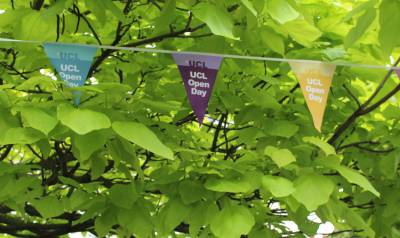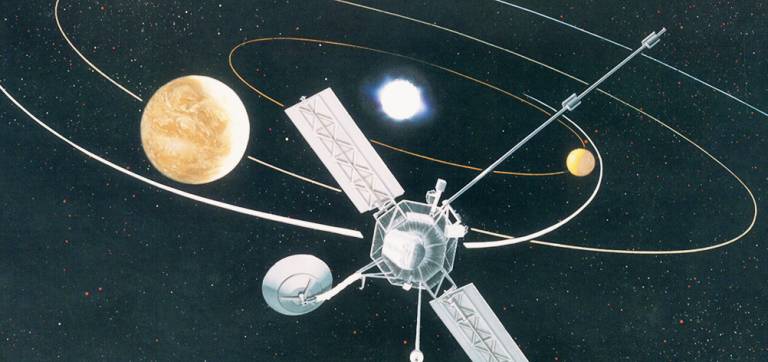A quick splash - Professor Frank Smith, Department of Mathematics
27 May 2011
For a brief period in April 2011 a paper by my collaborator Peter Hicks and myself was in august company, in a list of the most popular /most downloaded papers from the prestigious journal Proceedings of the Royal Society series A. There we were temporarily along with Dirac, Hawking and Penrose and ahead of Crick and Watson! The list covers 1928-2011 and reads as follows.
1. Pictish symbols revealed as a written language through application of Shannon entropy, Rob Lee, Philip Jonathan and Pauline Ziman, 2010
2. A Mars hopping vehicle propelled by a radioisotope thermal rocket: thermofluid design and materials selection, H. R. Williams, R. M. Ambrosi and N. P. Bannister, 2011
3. Quantal Phase Factors Accompanying Adiabatic Changes, M. V. Berry, 1984
4. The Singularities of Gravitational Collapse and Cosmology, S. W. Hawking and R. Penrose, 1970
5. The Quantum Theory of the Electron, P. A. M. Dirac, 1928
6. Surface Energy and the Contact of Elastic Solids, K. L. Johnson, K. Kendall and A. D. Roberts, 1971
7. The Determination of the Elastic Field of an Ellipsoidal Inclusion, and Related Problems, J. D. Eshelby, 1957
8. Skimming impacts and rebounds on shallow liquid layers, Peter D. Hicks and Frank T. Smith, 2011
9. The Complementary Structure of Deoxyribonucleic Acid, F. H. C. Crick and J. D. Watson, 1954
10. Stability of ice-sheet grounding lines, Richard F. Katz and M. Grae Worster, 2010
Now, many of us have a more-or-less natural feeling for how to throw a stone to make it skim or skip and splash its way across a stretch of water, as in the game 'Ducks and drakes'. (More serious motivations are mentioned below.) Some have attempted interesting explanations on why skimming and bounces happen. What the paper does is to apply a first mathematical argument, leading step-by-step to formulae for the skimming and bounces.
Coupling the motion of the solid body to the hydrodynamics in a thin liquid layer during an oblique impact, as in the sketch, the paper shows that the force generated by the pressure under the wetted surface of the body is sufficient to retard the downwards motion of the body and then accelerate it back upwards, clear out of the
water. Thus a quantitative explanation is provided of the characteristic bouncing motion and accompanying quick splashes.
While entertaining everyone from small children to maths professors who are out looking for inspiration on a riverbank, stone skimming and the question of whether or not an object rebounds from an oblique impact with a liquid surface has an enormous impact on many physical problems, particularly from within the aviation /safety
industry. In January 2009, the crew and passengers of an Airbus A320 aircraft were probably desperately relieved their plane didn't bounce when pilot Chesley "Sully" Sullenberger III skillfully "ditched" in the Hudson River, New York. Yet every day while flying though clouds, similar aircraft encounter tiny ice crystals which often interact with thin layers of water coating the outside of the aircraft. If sufficient numbers of these ice crystals do not rebound upon impact and instead attach themselves to the aircraft, then the subsequent loss of lift and increase in drag can have catastrophic consequences for aircraft performance (as in a disastrous crash in Washington during the 1990s). Other serious applications of this departmental research speciality are in food manufacture, including most notably chocolate drops, and in meteor impacts and bounces on planet surfaces, a joint interest with Professor Jan-Peter Muller in UCL Physics.
The motivation for working on skimming impacts also came from a wider collaboration between Peter (now at UEA) and Frank in the Department of Mathematics at UCL and AeroTex UK LLP, an aircraft icing consultancy. The latter's work involves predicting where ice may form on an aircraft, assessing what effect the ice may have and where necessary finding ways of removing it. This ongoing collaboration has also investigated droplet impacts and other phenomena associated with splashing, while seeking to better understand the interactions between an aircraft and a cloud of raindrops.
The work also made a quick splash in the media. The publication led to articles in the Daily Telegraph, the Daily Mail and ScienceNOW and to three radio interview.
 Close
Close




